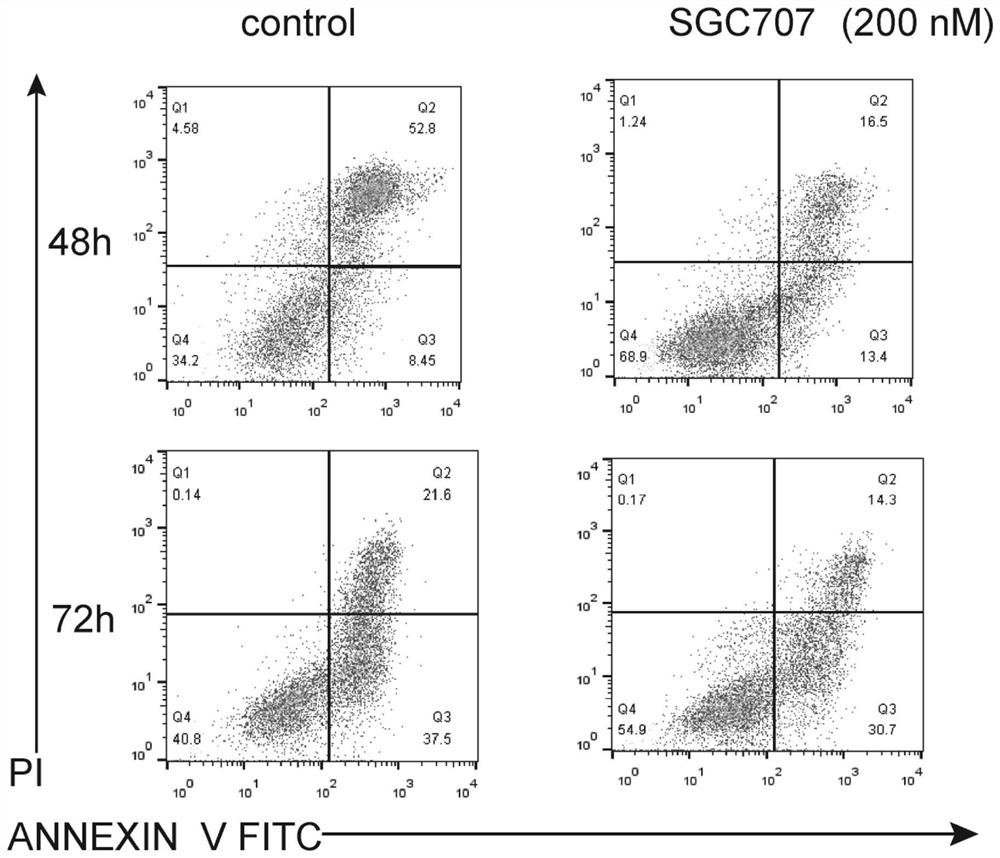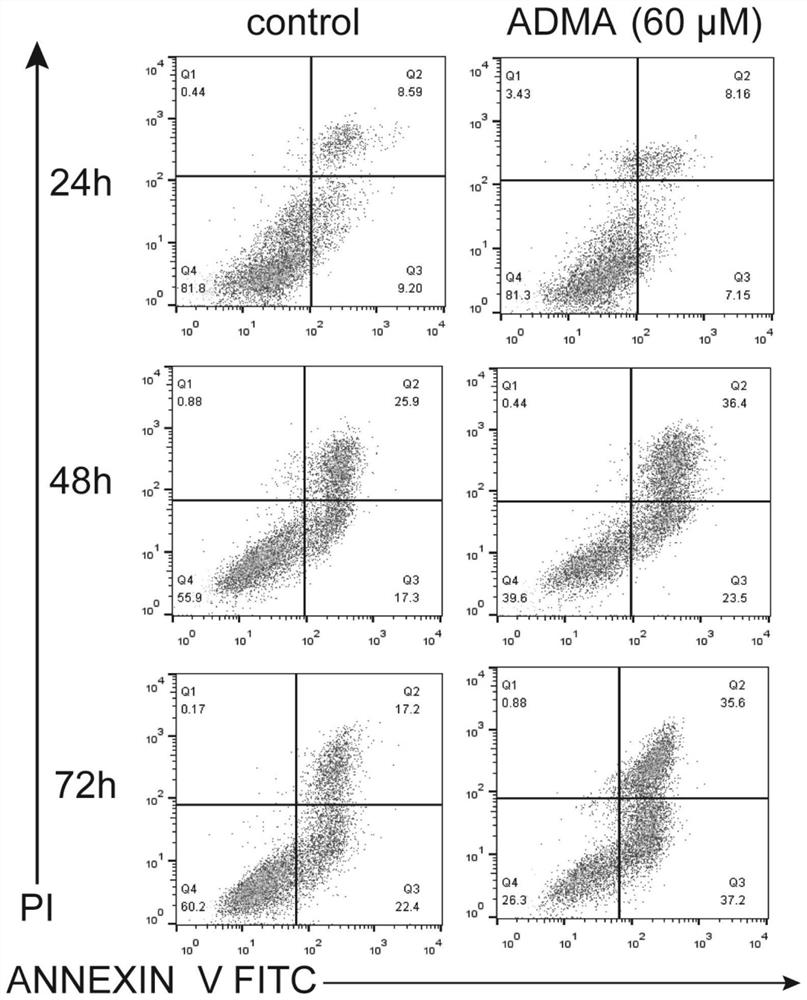Application of PRMT3 in diagnosis or treatment of recurrent spontaneous abortion
A spontaneous abortion and recurrent technology, applied in disease diagnosis, medical preparations containing active ingredients, diseases, etc., can solve the problems of limited function of PRMT3, achieve the effect of clear mechanism, inhibition of apoptosis, and promotion of apoptosis
- Summary
- Abstract
- Description
- Claims
- Application Information
AI Technical Summary
Problems solved by technology
Method used
Image
Examples
Embodiment 1
[0027] Example 1: Analysis of PRMT3 expression in decidual tissue and decidual macrophages of normal pregnant women and patients with recurrent spontaneous abortion
[0028] Decidual cells comprise terminally differentiated uterine stromal cells (also known as decidual stromal cells) and numerous maternal immune cells, the major populations of which include uterine natural killer cells and macrophages. By Western blot analysis, we found that the expression level of PRMT3 protein in decidua tissue was significantly up-regulated. In order to further verify which type of decidual cells the expression of PRMT3 protein was up-regulated, we detected the protein expression level of PRMT3 in decidual stromal cells extracted from decidual tissue, uNK cells and macrophages by Western blot. The results showed that PRMT3 protein expression (1.358±0.2073vs 0.4888±0.08541, P=0.0002) was significantly up-regulated in decidual macrophages of RSA patients compared with normal pregnant women ( ...
Embodiment 2
[0029] Example 2: Inhibition of PRMT3 reduces HTR8 cell apoptosis
[0030] Decidual macrophages have many functions during pregnancy. Previous studies have shown that decidual macrophages perform a 'cleanup' function by engulfing apoptotic trophoblast cells, thereby preventing the activation of pro-inflammatory pathways in the decidua. In this study, we established a co-culture model of decidual macrophages and HTR-8 / SVneo cells through Transwell culture plates to explore the possible regulation of macrophages on trophoblast apoptosis. Decidual macrophages derived from RSA patients were sorted and purified by CD14 magnetic beads and cultured in the lower chamber of the Transwell plate, and HTR-8 / SVneo cells were spread in the upper chamber of the Transwell plate. The decidual macrophages in the lower chamber were divided into two groups. The decidual macrophages were stimulated with 200nM PRMT3 specific inhibitor SGC707 in the treatment group, and the control group was treate...
Embodiment 3
[0031] Example 3: Increasing ADMA increases trophoblast apoptosis
[0032]To further verify the importance of PRMT as a regulator of trophoblast apoptosis, we used its proteolytic product ADMA to corroborate. The decidual macrophages derived from normal pregnant women were sorted and purified by CD14 magnetic beads and cultured in the lower chamber of the Transwell plate, and the HTR-8 / SVneo cells were spread in the upper chamber of the Transwell plate. The decidual macrophages in the lower chamber were divided into two groups. The treatment group was treated with 60 μM exogenous ADMA, and the control group was treated with DMSO, a drug solvent equal to the volume of ADMA. After treatment for 24h, 48h or 72h, the HTR-8 / SVneo cells in the upper chamber were collected, and apoptosis analysis was performed by flow cytometry. The experimental results showed that compared with macrophages in the control group, macrophages treated with ADMA for 48h or 72h were co-cultured with HTR-...
PUM
 Login to View More
Login to View More Abstract
Description
Claims
Application Information
 Login to View More
Login to View More - R&D
- Intellectual Property
- Life Sciences
- Materials
- Tech Scout
- Unparalleled Data Quality
- Higher Quality Content
- 60% Fewer Hallucinations
Browse by: Latest US Patents, China's latest patents, Technical Efficacy Thesaurus, Application Domain, Technology Topic, Popular Technical Reports.
© 2025 PatSnap. All rights reserved.Legal|Privacy policy|Modern Slavery Act Transparency Statement|Sitemap|About US| Contact US: help@patsnap.com



